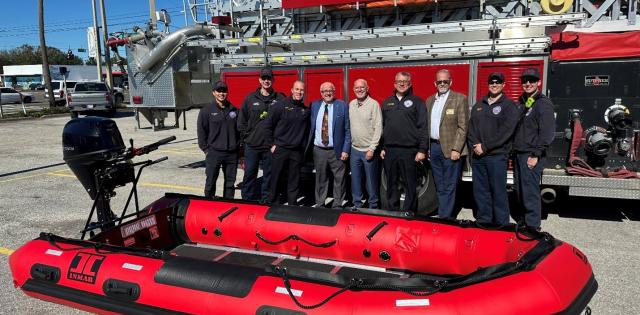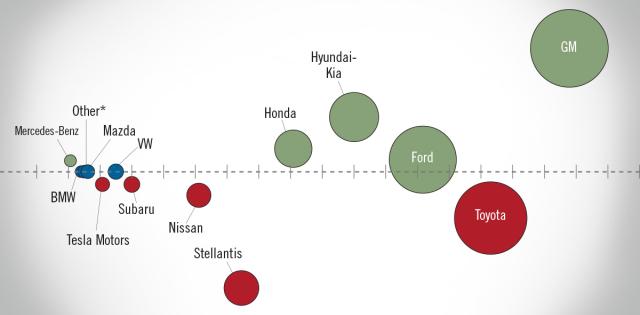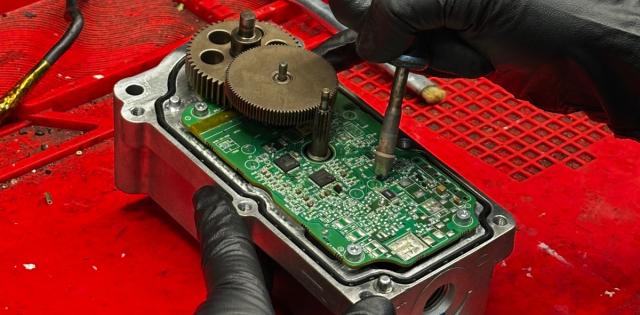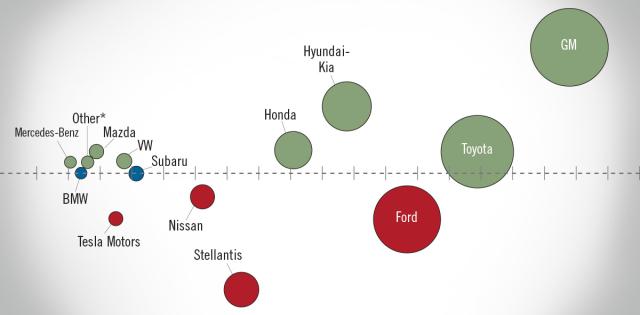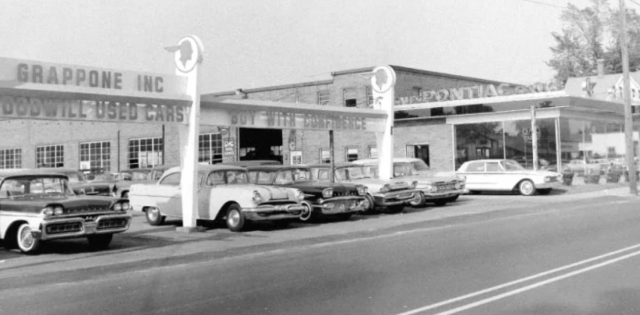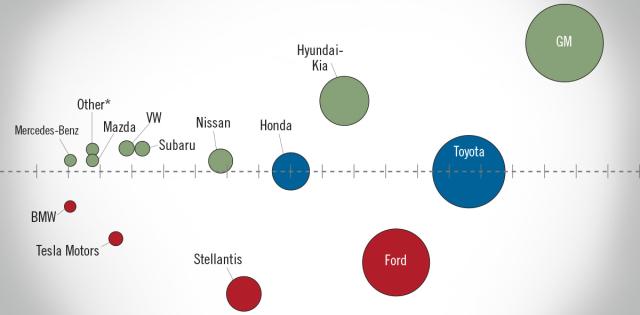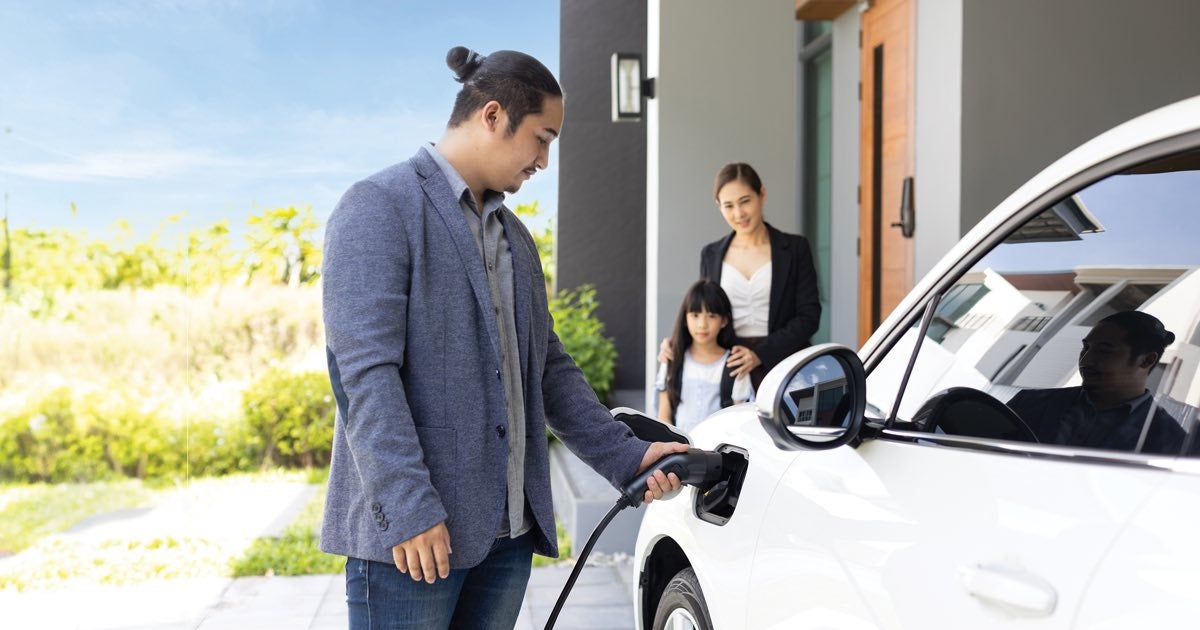
There is nothing dealers love more than new product. And there has scarcely been a time in the last 50 years when more exciting new models have hit showrooms than in 2023. Manufacturers doubled the number of electric vehicles available in showrooms last year, with even more on the horizon. Local dealerships invested a total of $10 billion in equipment, charging infrastructure, training and inventory for these vehicles. But by mid-2023 it became clear that customers just weren't showing up to purchase new EVs.
And it's not that they weren't interested. According to Escalent research, the number of "EV Intenders" – that is, new-car buyers who have a high propensity to shop for an EV–climbed to 23% in 2023.
But interest in EVs didn't turn into sales. Why not?
For many customers, the practical aspects of owning an electric car just don't work.
"With traditional ICE cars, the vehicle fits into your lifestyle," says one Porsche dealer in Colorado. "Our customers are finding that once they buy an EV, they have to fit into the EV lifestyle-and many are just not willing to do that."
The central difference between the "EV lifestyle" and traditional gas car ownership is charging. Most consumers are deeply skeptical about trading easy-to-fill gas tanks for hour-plus charges at charging stations.
According to J.D. Power, four of the top five reasons for EV rejection relate to charging, with 76% of consumers who reject EVs citing at least one charging-related concern. And according to an NADA dealer survey, 69% of consumers who decline to purchase an EV cite driving range as their chief concern.
The product is terrific-but the practical drawbacks of owning an EV seem to be thwarting mass EV adoption.
While this may be a surprise to regulators-who at the federal level are pushing for two-thirds of vehicles to be zero emission by 2032-the challenge of bringing new technology to the mass market is old-hat in the marketing world.
TOO FAR TOO FAST
In the marketing classic Crossing the Chasm, author Geoffrey Moore describes the difficulty of moving new technology from early adopters to the mass market. The problem is so universal and so difficult that Moore says there is effectively a "chasm" in the market between early adopters and the mass market that can be nearly impossible for tech companies to cross.
Early adopters "find it easy to imagine, understand and appreciate the benefits of new technology," but mass-market customers-even progressive ones-are "ultimately...driven by a strong sense of practicality."
That's why through meetings at the White House, the Environmental Protection Agency (EPA) and Congress, NADA has been calling on federal regulators and Congress to slow down on EV mandates. Since the summer of 2023, when EPA released its new proposed targets on EVs, NADA has called the proposal "too far too fast" and urged regulators to take a more realistic, consumer-friendly approach to adopting EVs.
NADA has been particularly supportive of bringing targets to more realistic levels, moving the time line back, and promoting the use of hybrids and plug-in hybrids to both lower emissions and get mass-market customers used to plugging in.
Two major legislative proposals are gaining momentum. Lisa McClain (R-Mich.) sent a letter to House and Senate leaders co-signed by 223 members of the House and Senate supporting a provision to pause EPA's EV mandates for one year. A parallel initiative, the CARS Act, passed the House and goes further and would permanently prevent the EPA from mandating any specific technology, such as EVs. NADA is backing both the one-year pause and the CARS Act. President Biden has threatened to veto both bills, but the one-year pause has a narrow path to passage if included as part of a broad spending bill in 2024.
"The government has got to put consumers at the center of this equation-or we're going to wreck the economy while keeping older ICE vehicles on the road," says NADA President and CEO Mike Stanton. "The EPA is going too far too fast, and if its targets end up too aggressive, we'll be looking at all options to bring common sense back into EV policy."
For a comprehensive list of NADA's public policy efforts on EVs, visit nada.org/epa.
NADA Activity on EPA Mandates in 2023
May
- NADA published Dealerships on Track to Invest $5.5 Billion in EV Infrastructure, highlighting the huge investment in equipment, charging infrastructure and training dealers are making to support the sales and service of EVs.
- The investment figure has since been increased to $10 billion to include dealership EV inventory.
- NADA Regulatory Affairs Committee member Jeff Weber testified on problems with EPA's EV proposal and submitted remarks for the record.
- Former ATD Chairwoman Jodie Teuton testified on behalf of ATD regarding EPA's aggressive greenhouse gas emissions standards for heavy-duty commercial trucks.
July
- NADA filed extensive comments in response to EPA's EV proposal, focused on the vehicle demand side of the equation.
- NADA stressed that new standards must account for factors such as vehicle affordability, consumer incentives, charging infrastructure, utility capacity and model availability.
September
- Reversing EPA's "too far too fast" approach is one of NADA's legislative priorities.
- During NADA's Washington Conference, dealers and ATAEs began pressing Congress to correct EPA's EV policy.
- NADA urged members of Congress to sign a letter led by Rep. Lisa McClain (R-Mich.), which expressed strong opposition to "EPA's misguided attempt" to push EVs before consumers are ready. The letter currently has 179 total signers (21 senators, 158 representatives).
September-November
- NADA began advocating for the Choice in Automobile Retail Sales (CARS) Act (H.R. 4468/S. 3094), which permanently prohibits EPA from finalizing its emissions proposal.
- NADA held numerous in-person meetings with senior White House and EPA officials to voice practical concerns about the impact of the proposed emissions regulation and to provide data demonstrating why the regulations will actually slow, rather than accelerate, EV adoption.
October-November
- NADA influenced a front-page New York Times article about the realities confronting policymakers with EV tax credits.
- NADA Director and Past Chairman Rhett Ricart was quoted as a Ford dealer on the front lines.
November
- NADA and ATD jointly submitted a letter to House Republican leadership in support of the House Interior-Environment Appropriations bill (H.R. 4821), which would prevent EPA from finalizing or implementing the unrealistic EV mandates for light-duty and medium- and heavy-duty trucks. The House passed H.R. 4821 on November 3.
- NADA published an op-ed in Automotive News urging policymakers to consider plug-in hybrids as a bridge to EVs.
December
- NADA voiced support for an effort by Rep Lisa McClain (R-Mich.) to pause implementation of any new EPA rule on EVs for one year.
- NADA voiced support for the CARS Act–a measure that would disallow EPA from spending any taxpayer money to implement its proposed rules on EVs.
For more stories like this, bookmark www.NADAheadlines.org as a favorite in the browser of your choice and subscribe to our newsletter here:


